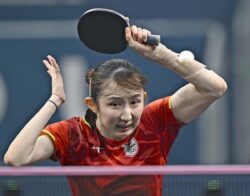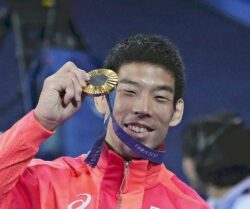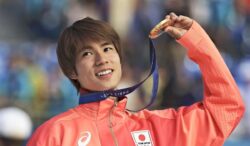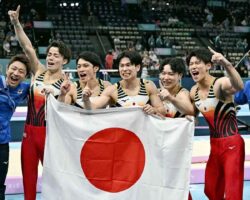testogpsetting
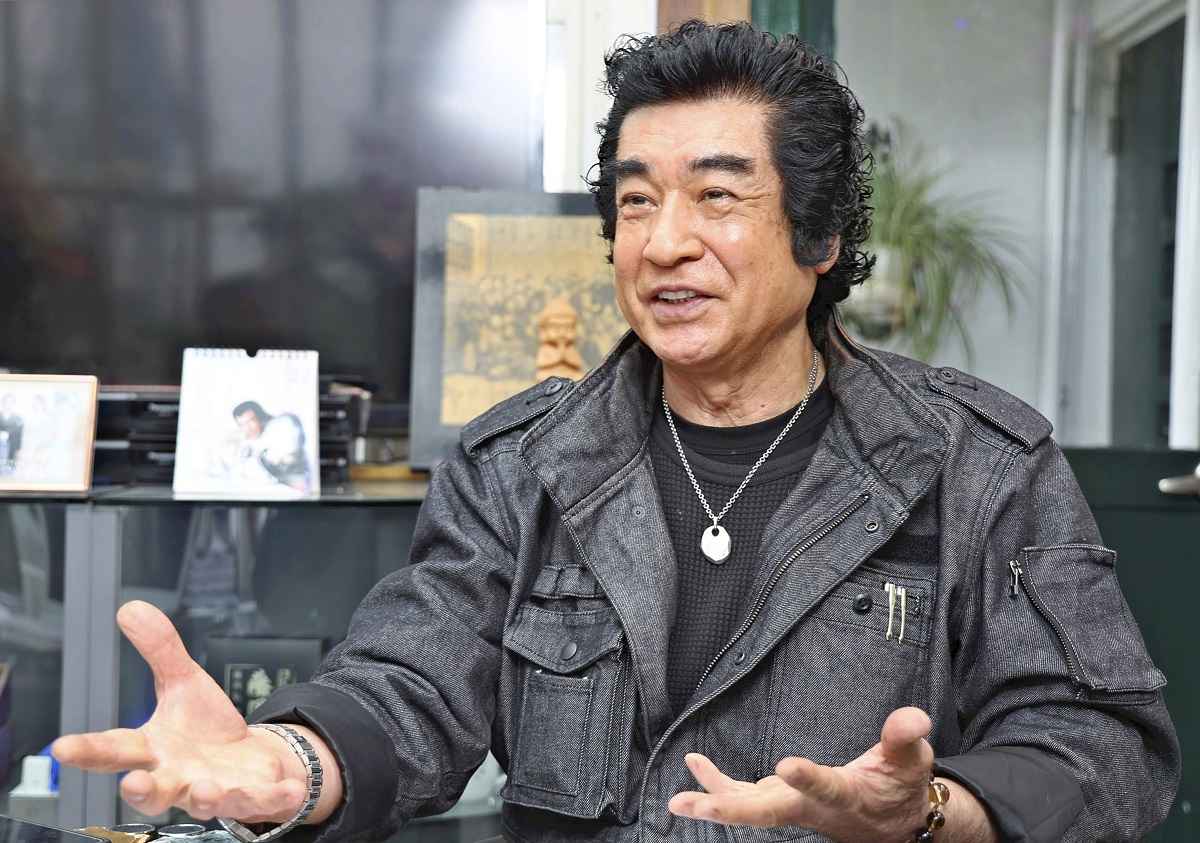
“I realized that giving dreams to children means creating a future, and that changed how I live,” Fujioka said in Tokyo in April.
12:42 JST, July 11, 2024
Hiroshi Fujioka made a hero out of Kamen Rider
“Kamen Rider” (Masked Rider) has been a monumental part of the tokusatsu genre of television programs. And it all began with actor Hiroshi Fujioka. As Takeshi Hongo, aka Kamen Rider No. 1, Fujioka excited children across Japan and laid the groundwork for a series that has lasted more than half a century.
He has also starred in a Hollywood movie and shown a humorous side in TV commercials and variety shows.
As if that were not enough, he has visited more than 100 countries and has been involved in relief activities in refugee camps and other places. His martial arts training, which he has continued since childhood, and the physical strength he maintains at age 78 have supported a wide range of activities.
Fujioka was born into a family with a longstanding tradition of practicing martial arts in Ehime Prefecture. Enchanted with the world of movies, he ventured to Tokyo alone after graduating from high school.
Although he lived in poverty for a while, he was discovered while working part-time and invited to join movie giant Shochiku Co.
Speaking in his home prefecture’s Iyo dialect and having a mild-mannered personality gave him a massive inferiority complex, but he still made his movie debut in 1965 ahead of his rivals. However, he found that the focus on adolescence in Shochiku’s films didn’t suit him. He secretly auditioned for roles outside the company.
“[When I heard that they were looking for] someone who was physically able to do action scenes, do martial arts and could ride a motorcycle, I thought I was a perfect fit,” he said. “I had no idea what a Kamen Rider was. They told me to wear a mask that looked like a skull. At first, I was shocked to hear that my face wouldn’t be shown, but it piqued my curiosity,” he recalled.
Yasuji Oshima, 81, a still photographer and a leading specialist in tokusatsu hero photography, remembers the first time he met the lead actor on the filming set.
“[Fujioka] appeared wild and bestial. I thought he was quite unique,” Oshima said.
“He was good at action. He had long legs, so he looked good whether he was kicking or riding a motorcycle,” Oshima added.
During filming, Fujioka also performed as a suit actor in costume. Fujioka said that scared him. “I felt pressure to go to the set every day.” The masks restricted his field of vision, and the costume made it difficult for him to move.
Shortly before the show aired, he fell while filming on his Cyclone motorcycle. He suffered a complex fracture of his left femur and was unable to act.
Broadcasting began, using already-recorded footage. The crew bought time by having non-Fujioka characters such as “Kamen Rider No. 2” appear.
Immediately after returning to work six months later, Fujioka found himself called on to drive the Cyclone over slippery volcanic ash during a shoot on the island of Sakurajima in Kagoshima Prefecture.
With iron pins in his leg to support his bones, he trembled for the first time in his life. But the trusting eyes of the staff watching him made him determined to do it. With his mind cleared completely, he made the ride successfully. But even now he has no memory of the moment.
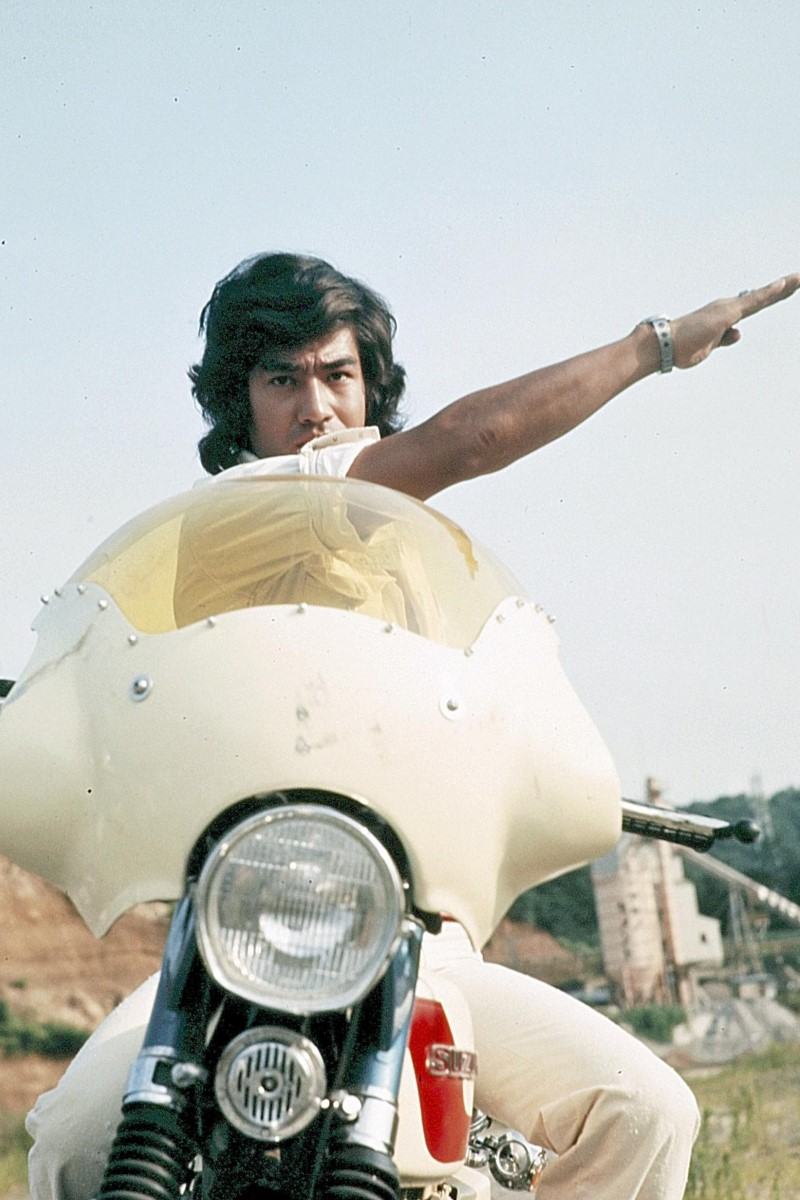
The show’s popularity exploded, thanks in part to sequences in which the two Kamen Riders fought together, and viewer ratings exceeded 30%. Children imitated the transformation pose, and mothers became fascinated with Fujioka. “He was like how South Korean idols are now. We had trouble keeping the screaming moms off the set,” Oshima said nostalgically.
Later, Fujioka appeared in the movie “Nihon Chinbotsu” (Japan sinks), as well as NHK historical dramas and the TV Asahi detective drama “Tokuso Saizensen” (Special investigation frontline).
In 1984, he went to the United States and auditioned as his own for the Hollywood movie “Ghost Warrior.” He demonstrated the art of sword fighting with a real sword and won the lead role.
After returning to Japan, however, financial troubles and poor health prevented him from performing for nearly 10 years.
In 1997, when he was at rock bottom, he received an offer to appear in TV commercials for the Sega Saturn video game console.
He would play the mascot character “Segata Sanshiro,” a parody of the judo fighter protagonist of a classic novel “Sugata Sanshiro.”
“The only hero with the overwhelming power to get to the bottom of things was Kamen Rider, that is, Mr. Fujioka, who follows the bushido way of life,” said Koji Ando, 56, of Hakuhodo Inc., who planned the TV commercials.
During filming, he jumped through fire, ran on ice barefoot and broke a stack of roof tiles with his head.
In a scene where he repeatedly strikes a giant game controller, his knuckles became covered in blood. The commercials, which conveyed Fujioka’s seriousness, attracted attention, and a total of 19 were made.
His popularity resurged, and in 2002 he began appearing in “Fujioka Hiroshi, Tankentai” (Hiroshi Fujioka’s exploration party), a variety show series. In each episode, he would spend a month or more in a location such as the Amazon or the Guyana highlands, where he would take on various adventures.
His philanthropic activities began when he started visiting children’s homes while he was starring in Kamen Rider.
He has traveled to disaster-stricken areas in Japan, post-civil-war Cambodia, famine- and epidemic-ravaged Sudan and Ghana and other danger zones to deliver relief supplies to refugee camps and hospitals.
While traveling around the world, he continued to regret that he did not move his base to Hollywood after starring in “Ghost Warrior.” His four children, who have also entered the entertainment industry, seem to be aware of their father’s feelings.
“They often tell me they want to make a movie in Hollywood with me as the lead,” he said.
Fujioka-style kobudo, which his father taught him as a child, is a comprehensive martial art.
It has served as the foundation for many skills he has learned, including judo; karate; battodo and todo, martial arts using swords; kodachi goshindo, a martial art for self-defense; and iaido, a technique for drawing a sword, under various masters while training to be an actor. He also excels in horsemanship as well as spear and star throwing.
Masaaki Hatsumi, 92, headmaster of the Bujinkan Dojo, has known Fujioka for more than 50 years, ever since he was playing Kamen Rider.
“I feel his natural strength in the way he moves. His movements when slashing a real sword are graceful, and the way he throws shuriken stars is also beautiful,” he said.
Fujioka’s martial arts experience has served him well in his many appearances in NHK historical dramas, where he has played samurai and warlords in such dramas as “Katsu Kaishu,” “Kasuga no Tsubone” and “Dosuru Ieyasu” (What will you do, Ieyasu?).
He often gives volunteer performances in Japan and abroad, slicing rolls of straw with a stroke of a real sword.
He never makes a mistake. “At this point, the sword is just part of my hand. I don’t feel out of the ordinary at all [when I’m using it],” Fujioka said.
Biography
- 1946 Born in Ehime Prefecture
- 1965 Made his film debut after joining Shochiku Co.
- 1971 Played Takeshi Hongo, the lead role in “Kamen Rider.”
- 1973 Played the lead role in movie “Nippon Chinbotsu.”
- 1974 Appeared in NHK’s historical drama “Katsu Kaishu.”
- 1977 Began acting in the drama “Tokuso Saizensen.”
- 1984 Played the main role in the U.S. movie “Ghost Warrior.”
- 1997 Played Segata Sanshiro in commercials for the Sega Saturn video game console.
- 2002 Began appearing in the TV variety show “Fujioka Hiroshi, Tankentai (expedition).”
- 2016 Played the role of Takeshi Hongo in the Kamen Rider 45th anniversary film “Kamen Rider 1.”
"Sports" POPULAR ARTICLE
JN ACCESS RANKING

